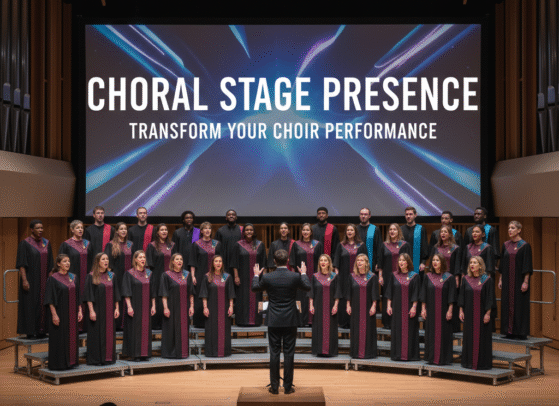Understanding Group Classes vs. One-on-One Lessons
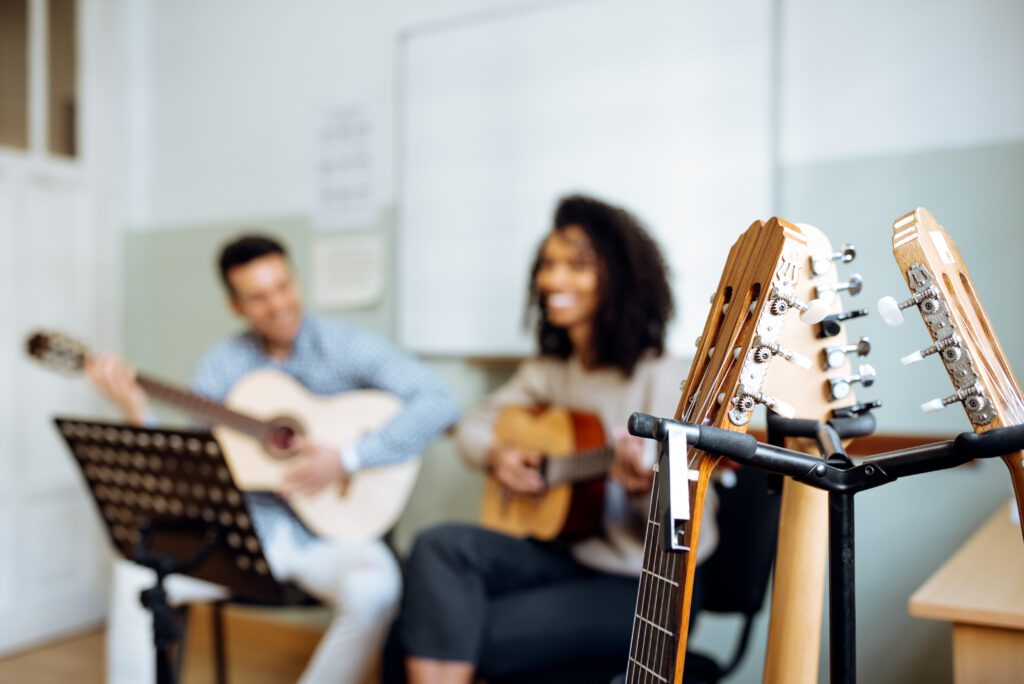
The educational landscape has evolved, offering students a range of learning environments. Among these options, two formats stand out: Group vs. One-on-One Lessons. Whether you’re a beginner eager to explore new skills or an experienced learner looking to refine your craft, it’s essential to weigh the benefits of both formats before making a decision. For many subjects, including music, language learning, and even personal development, these two methods can vastly differ in terms of structure, learning outcomes, and overall experience.
While group classes offer collaboration, social interaction, and a broader perspective, one-on-one lessons present personalized guidance, a customized pace, and undivided attention. However, determining which method is best suited for your learning style, goals, and availability can be a complex decision. In this article, we will explore both learning formats in-depth, examine their benefits and limitations, and offer insights to help you choose the right option for your personal or professional development.
As we delve deeper into group vs. one-on-one lessons, we will analyze the practical aspects of both approaches in areas such as cost-effectiveness, flexibility, teaching style, and overall impact on the student’s journey. We’ll also include expert insights and tips to help you decide which method could be the most advantageous for your learning.
The Pros and Cons of Group Classes
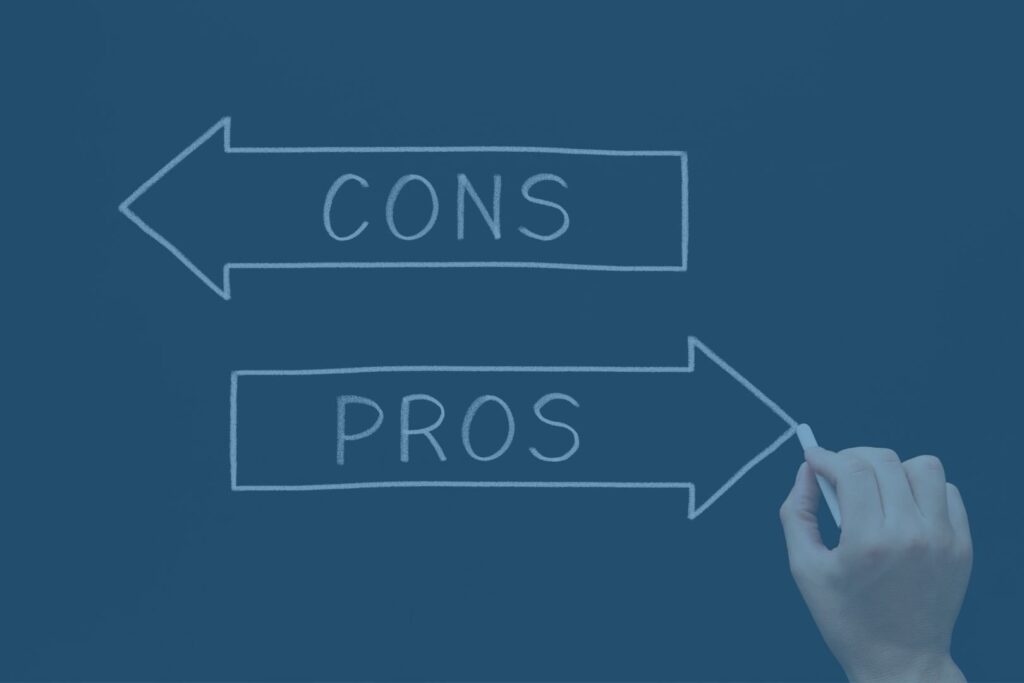
The Collaborative Learning Experience
Group classes provide a collaborative learning environment where students come together to explore a subject under the guidance of an instructor. The dynamic of a group offers numerous advantages, particularly for individuals who benefit from peer interaction, group discussions, and the collective energy that fosters motivation. Learning with others can introduce diverse perspectives, as every participant brings their unique ideas, experiences, and understanding to the table. This exposure to different viewpoints enriches the learning process, creating a more well-rounded educational experience.
In group settings, students often find that they develop essential social skills, such as communication, teamwork, and conflict resolution. For example, a student in a group music class may find it easier to collaborate with fellow students, whether in ensemble playing or engaging in group discussions about a musical piece. These interactions build a sense of community and camaraderie, making the learning process more enjoyable and fulfilling.
Cost-Effective Learning
One of the most significant benefits of group classes is the cost factor. Due to the number of students enrolled in each session, the instructor’s time is spread across multiple learners, which allows for a reduction in tuition fees compared to private lessons. This is particularly beneficial for students who are on a budget or those who wish to pursue a subject without committing to the often higher cost of private instruction.
For those looking to acquire general knowledge or explore a new hobby, group classes provide an affordable way to get started. For instance, music students can learn the basics of theory or techniques in a group setting and build foundational skills at a fraction of the cost of private lessons.
However, this lower cost often comes with certain trade-offs. Group classes may have a larger number of students, and as a result, the instructor’s attention is divided among the learners. This may result in less personalized guidance, making it harder for some students to address specific challenges or receive tailored feedback. This is where one-on-one lessons could offer a more focused and tailored experience.
Social Interaction and Motivation
One of the most powerful aspects of group learning is the opportunity for social interaction. Many people thrive in environments where they can discuss topics with others, share their experiences, and gain inspiration from peers. Group classes create a sense of belonging and solidarity, motivating students to stay engaged with the learning process.
This social aspect can be especially beneficial for students who thrive on encouragement and community. For example, in a group setting, students are often motivated by their peers’ progress and can celebrate milestones together. This shared experience creates a positive learning atmosphere where students support one another, making it easier to stay motivated.
Moreover, group settings often incorporate a variety of learning styles, helping students to explore diverse methods of instruction. Some students may benefit from listening to others’ insights, while others may find it more engaging to learn through group exercises or activities. These varied learning approaches help ensure that all students, regardless of their individual learning styles, can find ways to engage and learn effectively.
The Advantages of One-on-One Lessons

Personalized Attention and Customized Learning
One of the key advantages of one-on-one lessons is the personalized approach to learning. In a private setting, the instructor can tailor the lesson plan to meet the specific needs, goals, and learning pace of the student. Whether you’re a complete beginner or an advanced learner, one-on-one lessons can be adapted to help you progress more efficiently.
For instance, in private music lessons, an instructor can focus on a student’s technical skills, musical preferences, or even specific pieces they wish to master. This level of attention allows for immediate corrections, ensuring that students understand complex concepts and techniques before moving on to the next step.
The flexibility of one-on-one lessons allows the instructor to create a customized curriculum based on the student’s learning style. Some students may benefit from a more visual approach, while others may require more hands-on practice or verbal explanations. In one-on-one settings, these nuances can be seamlessly integrated into the lesson plan.
Flexible Scheduling and Convenience
Another standout feature of one-on-one lessons is the flexibility they offer in terms of scheduling. Unlike group classes, which often follow a set schedule, private lessons can be arranged based on the student’s availability and convenience. This makes private lessons an excellent option for individuals with unpredictable schedules or those balancing multiple commitments.
For example, if you work a full-time job or have a busy school schedule, you can book lessons at times that fit into your calendar, whether early in the morning, during lunch breaks, or in the evenings. This flexibility ensures that students can pursue their learning goals without feeling constrained by rigid class timings.
Additionally, private lessons can often be conducted virtually, giving students the option to attend from the comfort of their own homes. This added convenience further enhances the appeal of one-on-one instruction, making it an ideal choice for busy individuals or those in remote locations.
Increased Focus and Efficiency
When it comes to concentrated learning, private lessons offer an environment where the instructor’s attention is fully dedicated to one student. This undivided focus allows for faster learning and a deeper understanding of the subject matter. Students in one-on-one lessons can ask questions without hesitation, receive real-time feedback, and engage in focused practice.
The pace of one-on-one lessons can also be adjusted to match the student’s progress. If a student is struggling with a specific concept, the instructor can dedicate extra time to it, ensuring that the student grasps the material before moving on. Conversely, if the student is progressing quickly, the instructor can accelerate the lesson to cover more advanced material.
This level of customization makes private lessons an attractive choice for individuals who prefer a more intensive and efficient learning experience.
Comparing Group Classes and One-on-One Lessons in Detail
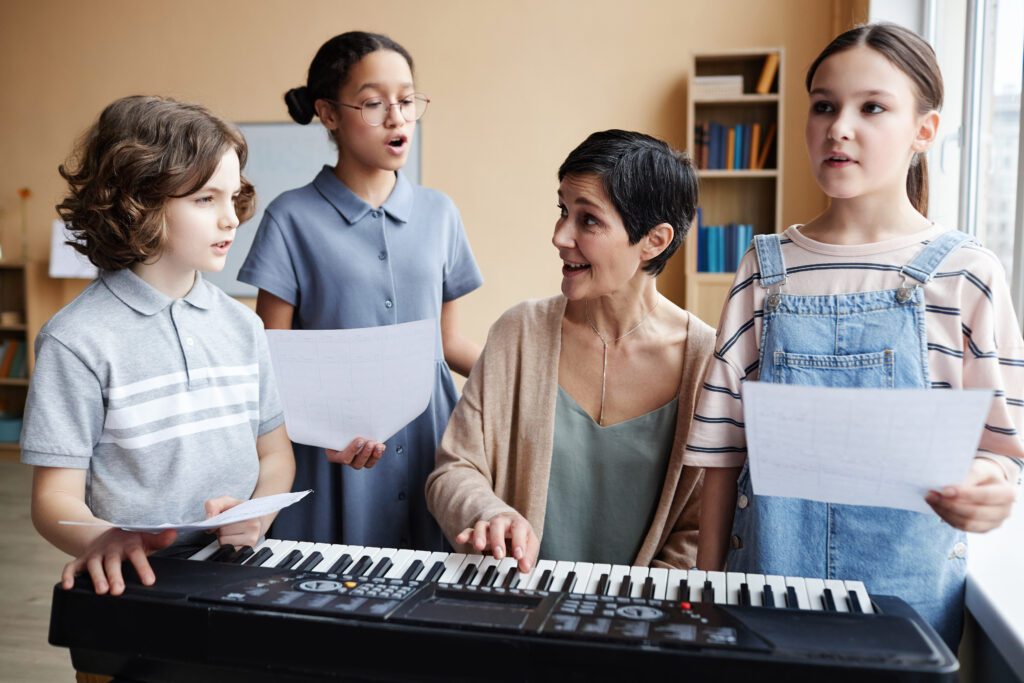
Learning Environment and Social Interaction
The learning environment plays a critical role in a student’s success. Some students thrive in the collaborative setting of group classes, where the energy of the group motivates them to perform at their best. The ability to engage in peer discussions, participate in group exercises, and observe others’ learning processes creates an atmosphere of mutual encouragement.
In contrast, other students find that the more personalized and focused setting of one-on-one lessons suits their learning needs. Without the distraction of other students, they can dedicate their full attention to the material at hand and receive personalized feedback that directly addresses their challenges.
When it comes to social interaction, group classes naturally offer more opportunities for students to bond, share experiences, and make connections. The support system created in a group environment can make learning more enjoyable and less isolating, particularly for subjects where interaction and collaboration are integral, such as music ensembles or team sports.
Curriculum and Learning Pace
One-on-one lessons have the advantage of offering a fully customized curriculum, allowing the instructor to adjust the pace according to the student’s individual progress. For instance, students who excel in a particular area can move forward more quickly, while those struggling with a concept can spend more time until they master it. This personalized pace is one of the main reasons why one-on-one lessons are often favored for subjects that require in-depth learning or mastery of complex skills.
Group classes, on the other hand, typically follow a standard curriculum designed for the group as a whole. While this ensures that all students cover the same material, it may not be suitable for students who need additional help or those who find the pace too slow. However, group classes offer the benefit of covering a wide range of topics in a single session, giving students a broad overview of the subject matter.
The Impact of Age on Learning Preferences
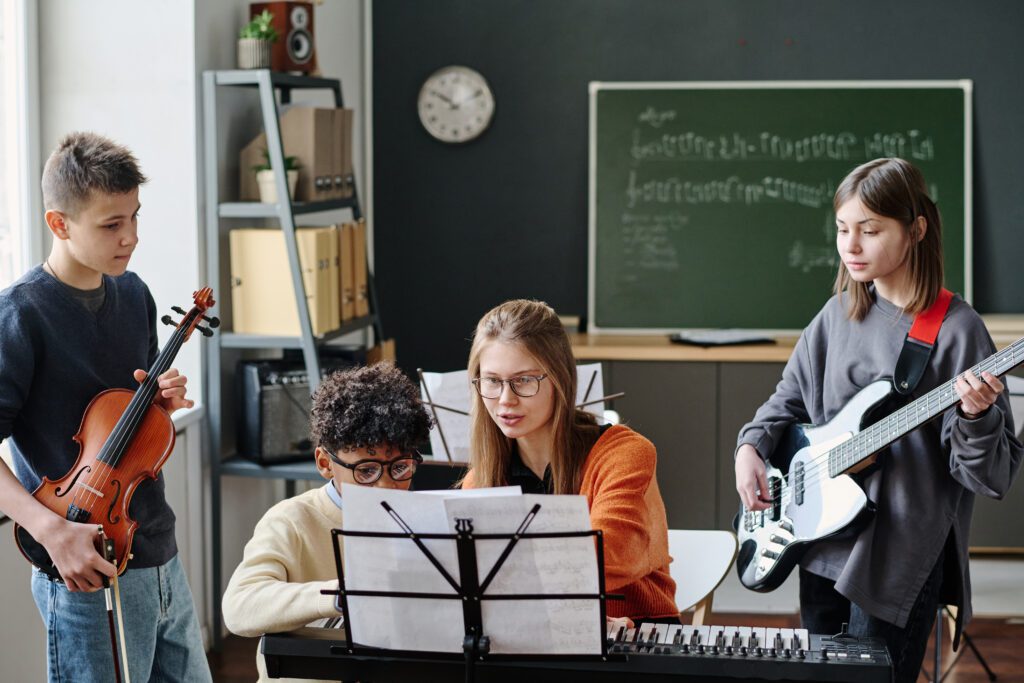
Children and Teenagers: Social Learning vs. Focused Attention
When it comes to young learners, group classes can be an excellent choice for many reasons. Children and teenagers often benefit from the social aspect of learning, where they can interact with their peers, form friendships, and learn collaboratively. Group classes are a great platform for developing communication skills and teamwork, which are essential in academic and extracurricular activities.
For instance, in a group music class, younger students might enjoy the sense of camaraderie that comes with performing together in an ensemble. These group activities foster a sense of belonging and help children feel part of a collective goal, such as preparing for a concert or recital. The pressure to keep up with the group also encourages discipline and responsibility.
However, for students who need more focused attention—especially those who may have learning disabilities, require more individualized guidance, or need to progress at a faster pace—one-on-one lessons offer a tailored environment that group classes cannot provide. In private lessons, the instructor can adjust the pace, address specific challenges, and offer strategies to help the student understand complex concepts. This level of individualized support is particularly valuable for children or teenagers who may struggle in a larger group setting.
Adults: Flexibility and Independence
For adult learners, the decision between group and one-on-one lessons often depends on their personal goals, time constraints, and learning preferences. Many adults prefer group classes because of the flexibility they offer. Group classes tend to have multiple time slots, and the social interaction in these settings can provide a sense of community, which is important for those balancing busy professional and personal lives.
However, adults who are seeking more advanced knowledge or need specific, individualized support often choose one-on-one lessons. For example, adults pursuing career development through skill acquisition or professional certifications often require customized training. One-on-one lessons allow these students to work at their own pace without the distractions of a group, helping them achieve their goals more efficiently. These private sessions also allow adults to engage in a deeper learning experience without the pressure of trying to keep up with others.
Additionally, for older learners or those with disabilities, one-on-one lessons can offer a more comfortable and accessible learning environment. A private instructor can provide tailored instruction based on the student’s abilities, challenges, and learning preferences.
Seniors: Personalized Learning for Cognitive Engagement
Senior learners often prefer one-on-one lessons because they offer a more intimate, focused environment that helps them maintain cognitive engagement without feeling overwhelmed by group dynamics. One-on-one lessons provide personalized attention, allowing instructors to adapt their teaching methods to suit the learner’s pace and learning style. This is especially important for seniors who may be learning new skills as a way to engage their minds or improve their quality of life, such as learning a musical instrument or a new language.
On the other hand, some seniors enjoy the social aspect of group learning. Group classes can offer a supportive community, encouraging seniors to interact with others and stay motivated through social engagement. Group classes also often foster a sense of shared accomplishment, which can be particularly rewarding for seniors. For example, a senior group learning to sing or play an instrument may find joy in collaborating with others, performing together, and building lasting friendships.
The key to success for senior learners is the ability to choose a learning format that meets their unique needs, preferences, and cognitive abilities. Some may find group classes stimulating and enjoyable, while others may benefit from the focused guidance offered in private lessons.
The Role of Instructor Experience and Teaching Style
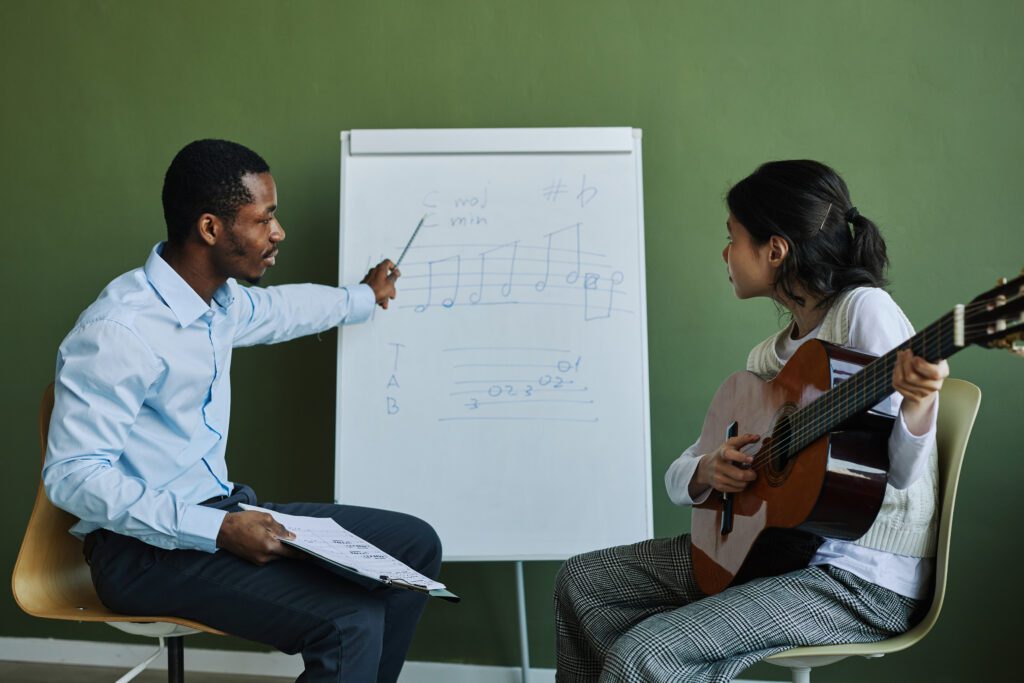
Group Classes: The Power of a Great Instructor
A skilled instructor can make a significant difference in the effectiveness of a group class. When teaching multiple students at once, instructors must possess strong classroom management skills, the ability to address individual needs within the group context, and the capacity to keep the class engaging. A great instructor can tailor group lessons to ensure that each student is challenged while ensuring that no one is left behind.
For example, in a group music class, an instructor might give general feedback to the entire class on a specific technique and then offer individualized tips for students who need extra assistance. Instructors who can manage diverse learning styles within a group are essential for creating an inclusive and effective learning environment.
One-on-One Lessons: Direct Access to Expertise
In private lessons, the teacher’s expertise is fully focused on the student, allowing for more in-depth instruction. The instructor can adjust their teaching style to the student’s learning preferences, offering more detailed explanations or different approaches to concepts as needed. A major advantage of one-on-one lessons is the ability to address the student’s exact challenges and goals without the constraints of a group dynamic.
For example, a student struggling with a particular piece of music can receive immediate, personalized feedback, while a more advanced student can move on to complex techniques without being held back by other learners. The teacher can adjust the lesson’s pace and complexity based on the student’s progress, offering a more streamlined, effective approach to learning.
In one-on-one lessons, the instructor can also create a more supportive and nurturing environment. Some students may feel shy or intimidated in a group setting, but private lessons provide a safe space where they can ask questions without fear of judgment. This personal attention allows students to build confidence and deepen their understanding of the subject matter.
The Decision-Making Process: Choosing the Right Format for You
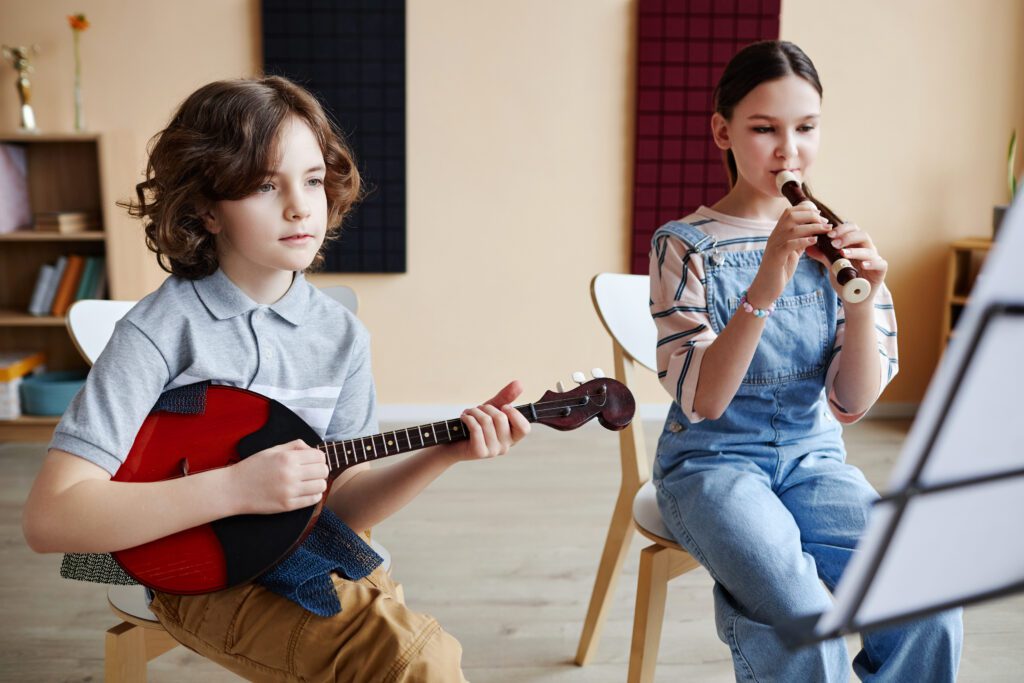
Consider Your Learning Style
Choosing between group and one-on-one lessons comes down to understanding your personal learning style. If you thrive in social settings and enjoy the energy that comes from working with peers, group classes may be more suitable. The collaborative learning experience, where students work together and learn from each other, can be incredibly motivating for many learners. Group classes also help build a sense of community, which is important for fostering lasting relationships with fellow students.
However, if you prefer a more focused and personalized approach, one-on-one lessons offer the opportunity for tailored instruction and a more flexible learning pace. With private lessons, the instructor can adapt the material to your exact needs and provide immediate feedback, which can accelerate your learning process.
Set Clear Goals
When deciding between group and one-on-one lessons, it’s important to consider your learning goals. Are you looking to master a specific skill quickly or explore a subject more casually? If you have a specific objective or need to learn a subject in depth, one-on-one lessons may be more effective, as they allow you to focus entirely on your individual goals.
For example, if you’re learning a new language, one-on-one lessons may help you develop fluency more quickly, as the instructor can focus on your weak areas and build a curriculum around your learning needs. However, if you’re looking to gain basic conversational skills or learn for personal enjoyment, group classes may be the more enjoyable and cost-effective option.
Budget Considerations
Cost is often a determining factor in the decision-making process. Group classes generally offer a more affordable option, as the instructor’s time is shared among multiple students. If you’re on a budget or simply want to explore a subject without committing to private lessons, group classes are a great way to get started.
On the other hand, one-on-one lessons tend to be more expensive due to the individualized attention you’ll receive. However, the investment may be worth it if you have specific goals or require focused, personalized guidance. Consider your budget and weigh the benefits of a more tailored experience against the cost.
Comparing the Effectiveness of Group vs. One-on-One Lessons in Different Learning Environments
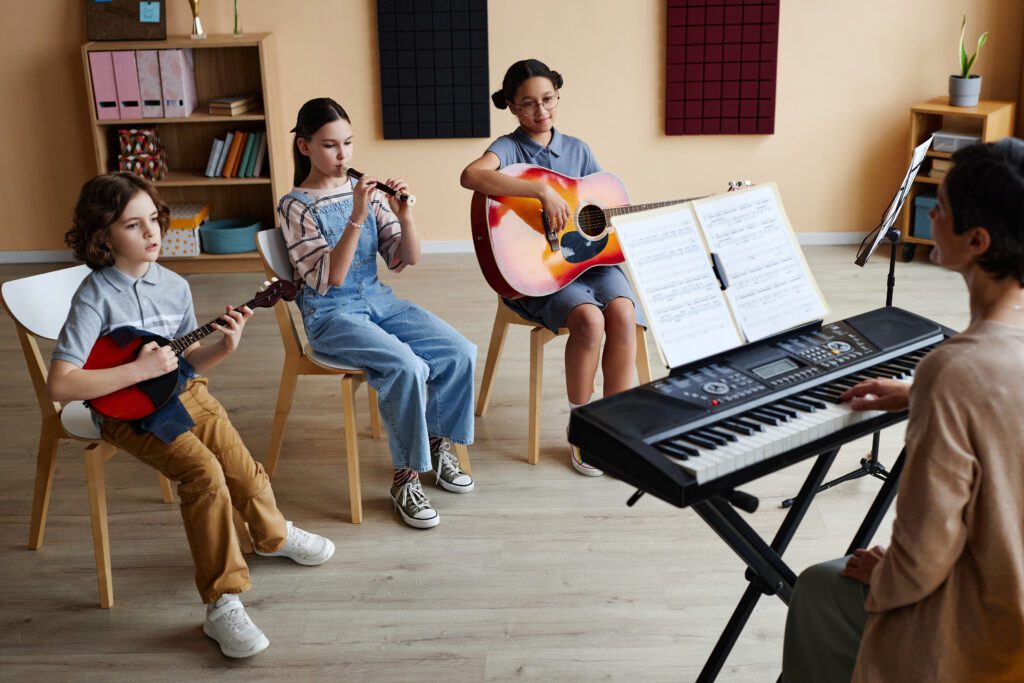
Virtual Learning: The Rise of Online Group Classes
The shift towards online learning has dramatically transformed how people access education, offering flexibility and convenience. Both group and one-on-one lessons have migrated to digital platforms, but the dynamics can differ significantly from in-person classes.
In a virtual group class, students experience the benefits of collaborative learning from the comfort of their homes. This format is particularly beneficial for individuals who cannot attend physical classes due to geographic constraints or time limitations. For example, a student living in a remote area might benefit from an online music class where they can interact with others from around the world, despite the lack of in-person classes in their locality.
However, virtual group classes come with their own set of challenges. The lack of physical presence can reduce the effectiveness of certain hands-on activities. Additionally, the distractions of home life or technological issues can hinder the learning process for some students. The instructor must also be adept at managing the digital classroom and ensuring that all students remain engaged, which can be harder to achieve compared to in-person classes.
On the other hand, online one-on-one lessons offer a more personalized experience. Without the distractions of a group setting, the instructor can focus solely on the student’s needs, making online one-on-one lessons highly effective for learners who require more tailored instruction. Whether it’s mastering a complex piano piece, improving language pronunciation, or understanding intricate mathematical concepts, online private lessons can be a game-changer.
For learners who are highly motivated and self-disciplined, the ability to attend virtual lessons from anywhere in the world opens up a wide array of opportunities. Whether in a group or private setting, the right digital tools—like video conferencing platforms, collaborative whiteboards, and screen-sharing—can create an effective learning environment.
Hybrid Learning: The Best of Both Worlds
One of the emerging trends in education is hybrid learning, where students can enjoy the benefits of both group and private lessons in a flexible format. Hybrid learning allows students to attend group sessions for collaborative exercises and discussions, while also reserving private lessons for focused, one-on-one instruction.
For instance, a student learning a musical instrument might attend weekly group lessons for ensemble practice, where they can play in a group and develop social skills. On the other days, they may have one-on-one lessons to work on individual skills, such as technique or theory, with a dedicated instructor. This combination of group interaction and personalized instruction helps students develop both their technical proficiency and their ability to work within a team.
Hybrid learning is also ideal for learners who have varying schedules or specific learning preferences. It offers flexibility while ensuring that students get the best of both worlds—collaboration and individualized attention.
Overcoming Common Challenges in Group and One-on-One Lessons
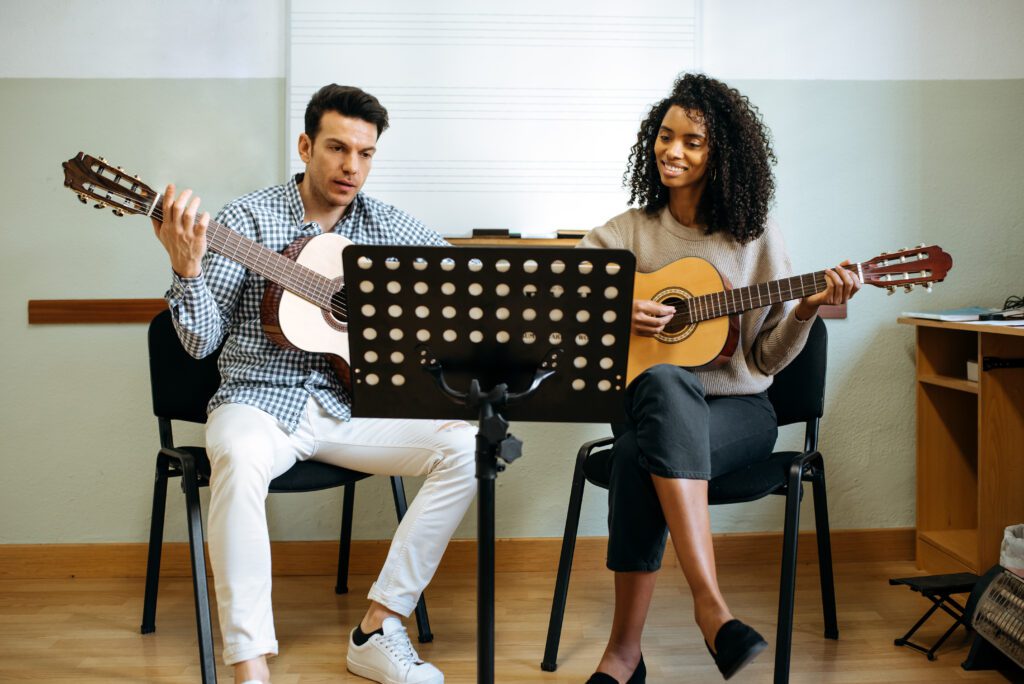
Challenges in Group Lessons
While group lessons have many benefits, they are not without their challenges. Some of the most common challenges faced by students in group classes include:
-
Pacing Issues: Group classes are often designed to accommodate students with varying skill levels, which means the instructor may need to move at a pace that is comfortable for the majority of the class. Students who need more time to understand a concept may struggle to keep up, while more advanced learners might feel held back.
-
Limited Individual Attention: In group classes, instructors can only provide limited individual feedback, making it difficult for students who may need extra support. For example, in a group music class, one student may be struggling with finger placement, but the instructor may not have enough time to give them personalized advice without slowing down the entire class.
-
Distractions: With multiple students in the room, there can be distractions, both from the environment and from other learners. Some students may feel overwhelmed by the noise or by the lack of focus in the class.
-
Uneven Group Dynamics: In certain group classes, the group dynamic may not always be conducive to learning. If the group is too large or the students are too diverse in terms of ability, the experience can be less than ideal for all involved.
Challenges in One-on-One Lessons
One-on-one lessons, while highly personalized, come with their own set of challenges:
-
Lack of Social Interaction: Some students may miss the social aspects of group classes. The isolation of private lessons can lead to feelings of loneliness or a lack of motivation, especially for students who thrive on peer interaction.
-
Higher Costs: One-on-one lessons tend to be more expensive than group classes. For many students, the cost of private lessons can be a significant barrier, especially if they require frequent sessions.
-
Dependence on the Instructor: In a one-on-one setting, the student’s learning experience is heavily reliant on the instructor’s abilities and teaching style. If the instructor does not connect well with the student or does not fully understand their learning needs, progress can be slow.
-
Limited Variety: One-on-one lessons, by nature, focus on the specific needs of the student, but they may not offer the variety of activities that group lessons can provide. Group classes can introduce students to new ideas, collaborative exercises, and diverse perspectives that may be absent in private lessons.
How to Overcome These Challenges
Understanding and anticipating these challenges allows learners to make informed decisions about their educational path. Here are a few strategies to overcome common difficulties in both types of lessons:
- For Group Classes: To manage pacing issues, students can seek additional support through extra practice sessions or tutoring. Communication with the instructor about individual needs can also help the class adjust to different learning speeds.
- For One-on-One Lessons: Students can supplement private lessons with group activities to maintain social interaction. Alternatively, attending workshops or events can help foster community while still receiving the benefits of personalized instruction.
The Right Choice for You
Choosing between group vs. one-on-one lessons ultimately depends on your individual preferences, learning goals, and financial situation. If you thrive in a social environment, value collaborative learning, and prefer a more affordable option, group lessons could be a better fit. On the other hand, if you prefer personalized attention, flexible pacing, and a more focused environment, one-on-one lessons may be the ideal choice for you.
Ultimately, both group and one-on-one lessons have their strengths, and understanding these strengths will help you make a more informed decision. It’s also worth considering that, in some cases, a hybrid approach—mixing both group and individual lessons—could provide a balanced learning experience.
Remember, the most important factor is how well the chosen lesson format aligns with your learning style, goals, and resources. Get One on One Lessons from world-class instructors at The Mystic keys.
For more information and exciting resources about learning music, visit our website at The Mystic Keys. For more music content and exciting offers follow us on
Facebook, Instagram, YouTube, LinkedIn, Twitter, Pinterest, Reddit, Threads, and Quora.






